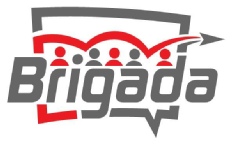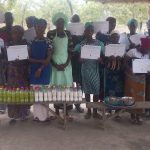 The process and training courses below are designed to teach individuals and organizations how to put into action their own integrated ministry of Community Health Evangelism (CHE). Once the participants are trained, they are able to set up a CHE program and teach volunteers how to implement the work in their own village. All teaching is done in a participatory style; the learner is the center of attention, not the teacher.
The process and training courses below are designed to teach individuals and organizations how to put into action their own integrated ministry of Community Health Evangelism (CHE). Once the participants are trained, they are able to set up a CHE program and teach volunteers how to implement the work in their own village. All teaching is done in a participatory style; the learner is the center of attention, not the teacher.
a) First Step: A desire to make a lasting difference in the lives of people in developing countries is a prerequisite.
b) Vision Seminar: A 14-hour, two-day seminar is used to introduce the CHE concept in a new country or area. Organizations or key village leaders who are interested in an integrated approach to wholistic community-based development are the ones who should attend this seminar. The next step is to participate in a Training of Trainers I (TOT I).
c) Teaching Nationals to be Trainers: Training of Trainers (TOT) enables people to teach the workers in the field how to put CHE into practice. TOT I focuses on the philosophy of CHE, how to choose a location, and how to start a CHE program. Spiritually, it emphasizes evangelism. The training normally takes 4 1/2 days covering 32 hours of classes.
d) After TOT I: The newly qualified trainers are to return to their areas and form a three or four person training team.
e) Selection of a Village: A training team takes great care to select the most receptive village. Discovering the methods of how to select a village takes place through an evaluation process taught during TOT I.
f) Entering a Village: There are a variety of ways to introduce a CHE team to a village and these methods also are taught during TOT I. There is an entire series of activities available during this phase.
g) Awareness Meeting: These meetings create an understanding of the community needs and reveal which ones are of greatest importance. It is important to provide a structured time where people have opportunities to express and explore what they know about their community. Also, the community begins to learn about CHE.
h) Community and Worker Selection: Once the villagers express interest in adopting the CHE strategy, the villagers then elect their own committee which will oversee the program development. The villagers also choose their own Community Health Evangelists (CHEs) who will teach the principles to their neighbors, possibly through picture booklets. Both the Committee and the CHEs are trained over the next six months by the training team. During this time nearly all who are not believers in Christ come to a saving knowledge of Him, and those who do not know Christ lose their motivation and quit the program. Thus, the program is both community-owned and spiritually strong.
i) Committee Training: A six-day, 18-hour training curriculum teaches the village committee their responsibilities. By teaching the Committee first, the individuals begin to take responsibility in their leadership roles in their village.
j) CHE Training: The prime training targets are the CHE’s. CHE lessons are taught by the training team. There are over 1,000 lesson plans from which the community can choose what they want to learn. This training team normally trains 15 – 25 CHEs in one geographical area, typically two days per week, until 40 – 50 sessions have been completed. Each session includes a spiritual/moral value lesson and a physical or health lesson.
k) Problem-Solving: Once trained, the villagers go to work to solve what they consider their most pressing community need. This need is voted by all committee members.
L) One-on-One: CHE trainees put into practice what they have learned in their own home. They then visit their neighbors and teach them what they have learned. A part-time CHE can work with 10 to 30 households.
m) Multiplication to Nearby Villages: These changed communities become models and individuals from these communities multiply their efforts to nearby towns and villages. Three to six local CHEs will be chosen from those trained by the initial outside training team to become trainers themselves. These local training teams will expand the program into adjacent communities within their area.
n) Funding: As much as possible, funding for the individual program needs to come from the local communities. Where local resources are insufficient, funds may be solicited from in-country agencies that are interested or working in community health, agriculture, etc.
o) Working In Creative Access Countries —
CHE is adaptable to meet needs of differing religious, cultural, governmental structures, and geopolitical situations. CHE trainers are now working in so-called “creative-access nations.” Changes have been made to CHE so it will be better accepted by the medical professionals and religious forces in these sensitive lands. In these countries CDE stands for Community Development Education. This title replaces CHE. The workers are called Community Development Educators, rather than Evangelists.
p) Spiritual Ministry Through Moral Value Topics —
God’s Word is introduced through storytelling and role plays. Moral value teaching is related to physical health as much as possible. If possible, the training team should be mature believers who will pray for the community they are working in and follow-up those who are seeking a relationship with God. Relationship development with religious leaders and health professional is key to successful introduction and sustainability of a CHE program.
q) Training Programs —
Training is critical for the success of any CHE Program. All of our training is highly participatory, no matter which group is undergoing training. There is a considerable use of problem-posing situations through role plays or pictures to start the discussion. Small group discussion is widely used as well as songs, stories, and demonstrations.











Recent Comments